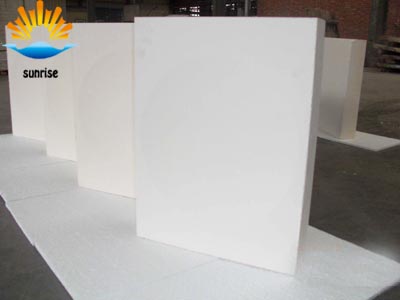Glass mould is an important tool for the formation of glass products. Its quality will directly affect its service life, the appearance of glass products and the cost. With the development of the technology of glass making, high requirements are put on the glass moulds and new glass mould materials are under development.
Cast iron, due to its advantages in the performance and cost, is still the most conmmonly used material in China. The conmmonly used material aboard is heat resistant cast iron. After the surface is processed with harding treatment, its service life can be expanded to 400,000-500,000 times. In china gray cast iron is commonly used. Its service life is 70,000-120,000 times. The application of cast iron is limited due to its poor resistance to oxidation, growing and thermal fatigue.
Currently the development and improvement of the glass mould materials are mainly reflected in three aspects:
1) Improve the performance of materials by alloying. The cast iron glass mold will be oxidized and grow at high temperature, which is the leading cause of the failure of glass moulds. In order to improve oxidation resistance of cast iron, alloying elements such as Cr, Mo, Ni, V and Sn are added. Cr is the most widely used alloying element in the heat resistant cast iron and can effectively improve the tensile strength, elongation,yield strength,hardness,heat resistance and oxidation resistance of cast iron. Mo can improve thermal stability and thermal fatigue resistance of cast iron; Cu can improve the processing performance and the surface roughness of cast iron;
2) Improve the resistance to oxidation and thermal fatigue by controlling morphology and distribution of graphite. The morphology and distribution of graphite can affect the performance of the mould. In gray cast iron, oxygen ion can directly enter the interior area through the path of flake graphite. The diffusion speed is high, the time to form a oxide film is short and the oxidation is serious. Since the distribution of D-type graphite and vermicular graphite is dispersed, the diffusion of oxide iron is slow and the oxide film is thin, thereby increasing the oxidation resistance of the material.
3) Develop new alloys to meet the needs. Use alloy steel, stainless steel, copper alloys and nickel-based alloys in the key components of the mould.
The metal composite material is a new material made of two or more metals. By properly selecting the materials and controlling the molding process, a stable binding layer is formed between the kinds of metals. Combining the advantages of the two materials, it has incomparable advantages over a single metal material and has long service life.

